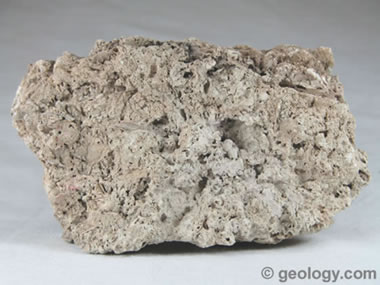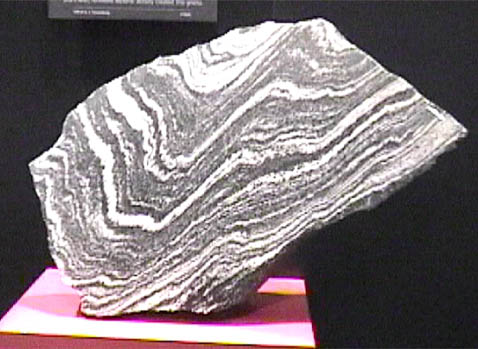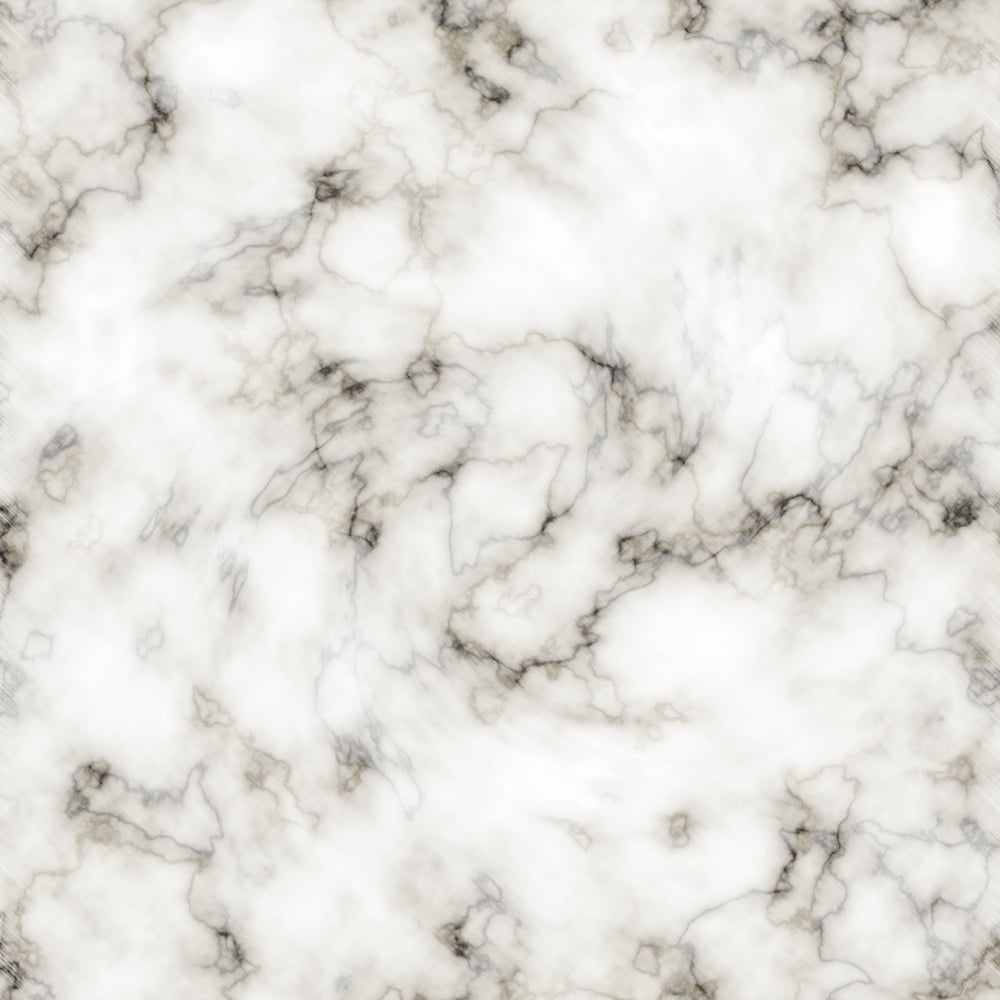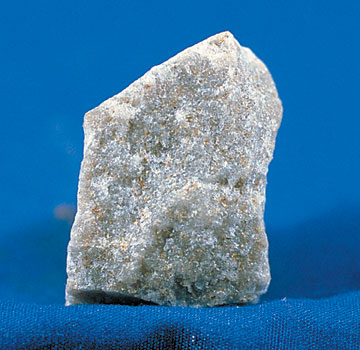Ch 3 Unit 3 & 4 Sedimentary And Metamorphic
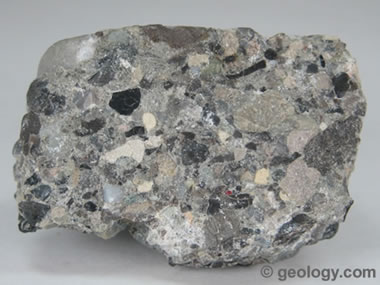
This quiz will include the concepts covered in Section 3 Sedimentary Rocks
- 1.
Which of the following is a use for fossils found in sedimentary rocks?
- A.
Interpreting past environments
- B.
Indicating when the rock formed
- C.
Matching rocks of the same age found in different places
- D.
All answers are correct
Correct Answer
D. All answers are correctExplanation
Fossils found in sedimentary rocks can be used to interpret past environments because they provide evidence of the types of organisms that lived in that area during a specific time period. They can also indicate when the rock formed by providing a relative age based on the types of fossils present. Additionally, fossils can be used to match rocks of the same age found in different places, allowing scientists to correlate and understand the geological history of different regions. Therefore, all of the given answers are correct.Rate this question:
-
- 2.
Which is not a type of sedimentary rock?
- A.
Chemical
- B.
Biological
- C.
Intrusive
- D.
Clastic
Correct Answer
C. IntrusiveExplanation
Intrusive is not a type of sedimentary rock because it refers to the type of igneous rock formation where magma solidifies beneath the Earth's surface. Sedimentary rocks are formed through the accumulation and compaction of sediment, such as clastic sedimentary rocks formed from the compaction of fragments of other rocks, chemical sedimentary rocks formed from the precipitation of minerals from water, and biological sedimentary rocks formed from the accumulation of organic materials.Rate this question:
-
- 3.
Where are fossils often found?
- A.
Caves
- B.
Underground
- C.
The ocean
- D.
Sedimentary Rocks
Correct Answer
D. Sedimentary RocksExplanation
Fossils are often found in sedimentary rocks because these rocks are formed from layers of sediment that accumulate over time. As new layers of sediment are deposited, older layers are compressed and hardened, preserving any fossils that may be present. Sedimentary rocks are commonly found on the Earth's surface, making them accessible for fossil discovery. Caves, underground, and the ocean may also contain fossils, but sedimentary rocks are the most reliable and common source for finding them.Rate this question:
-
- 4.
Whats the most common type of sedimetary rock?
- A.
Metamorphic
- B.
Organic
- C.
Chemical
- D.
Clastic
Correct Answer
D. ClasticExplanation
Clastic is the correct answer because it refers to sedimentary rocks that are composed of fragments or grains of pre-existing rocks. These fragments are typically transported and deposited by water, wind, or ice. Clastic rocks are the most common type of sedimentary rock and include sandstone, shale, and conglomerate. Metamorphic rocks are formed from the transformation of pre-existing rocks due to high heat and pressure. Organic rocks are formed from the accumulation and compaction of plant and animal remains. Chemical rocks are formed from the precipitation of minerals from water solutions.Rate this question:
-
- 5.
What type of rocks are formed by processes powered by the sun?
- A.
Metamorphic rocks
- B.
Sedimentary rocks
- C.
Igneous rocks
Correct Answer
B. Sedimentary rocksExplanation
Sedimentary rocks are formed by processes powered by the sun because these rocks are made up of sediment that is deposited and compacted over time. The sun plays a crucial role in these processes as it provides the energy for the water cycle, which includes erosion, transportation, and deposition of sediment. The sun's energy also drives biological activity, such as the growth of plants and the formation of organic matter, which can contribute to the formation of sedimentary rocks. Therefore, sedimentary rocks are the type of rocks that are formed by processes powered by the sun.Rate this question:
-
- 6.
What makes sedimentary rocks?
- A.
Heat, Air, Water, Dirt
- B.
Sun, Oxygen, H2O, Soil
- C.
Water, Air, Gravity, Heat
- D.
Water, Air, Gravity, Ice
Correct Answer
D. Water, Air, Gravity, IceExplanation
Sedimentary rocks are formed through the process of weathering, erosion, deposition, and lithification. Water plays a crucial role in the formation of sedimentary rocks as it transports sediments and deposits them in layers. Air aids in the weathering and erosion of rocks, breaking them down into smaller particles. Gravity helps in the transportation of sediments and their deposition in lower-lying areas. Ice, specifically glaciers, can also contribute to the formation of sedimentary rocks by carrying and depositing sediments as they melt.Rate this question:
-
- 7.
What is Sediment?
- A.
A type of cement
- B.
A type of rock
- C.
Mineral Grains, wind, water, ice
- D.
Rock, Shells, Mineral Grains, Bones, Teeth
Correct Answer
D. Rock, Shells, Mineral Grains, Bones, TeethExplanation
Sediment refers to a mixture of various materials such as rocks, shells, mineral grains, bones, and teeth that have been broken down and transported by wind, water, or ice. These materials accumulate and settle in layers, forming sedimentary rocks over time. Therefore, the correct answer is "Rock, Shells, Mineral Grains, Bones, Teeth."Rate this question:
-
- 8.
What are the types of sedimentary rocks?
- A.
Igneous, Detrital, Basalt
- B.
Organic, Metamorphic, Sedimentary
- C.
Balsalt, Clastic, Chemical
- D.
Clastic, Organic, Chemical
Correct Answer
D. Clastic, Organic, ChemicalExplanation
The correct answer is Clastic, Organic, Chemical. Sedimentary rocks are classified based on their formation process. Clastic sedimentary rocks are formed from the accumulation of fragments of pre-existing rocks. Organic sedimentary rocks are formed from the accumulation of organic materials such as plant and animal remains. Chemical sedimentary rocks are formed from the precipitation of minerals from solution. Basalt is an igneous rock, not a sedimentary rock. Therefore, the correct answer is Clastic, Organic, Chemical.Rate this question:
-
- 9.
Sedimentary rocks are
- A.
Moved around by waves or flowing water
- B.
Formed when plant and animal debris pressurize and build up.
- C.
Formed when water evaporates.
- D.
All of the above.
Correct Answer
D. All of the above.Explanation
Sedimentary rocks can be moved around by waves or flowing water, as the movement of water can transport and deposit sediments, leading to the formation of new sedimentary rocks. Additionally, sedimentary rocks can also be formed when plant and animal debris accumulate and undergo pressure, resulting in the formation of rock layers. Lastly, sedimentary rocks can also be formed when water evaporates, leaving behind minerals and sediments that eventually compact and harden into rock. Therefore, all of the given options are correct explanations for the formation of sedimentary rocks.Rate this question:
-
- 10.
How much time does it take for sedimentary rocks to form?
- A.
3 months
- B.
A year
- C.
At least a 50 years
- D.
Millions and millions of years
Correct Answer
D. Millions and millions of yearsExplanation
Sedimentary rocks are formed through the gradual accumulation and compaction of sediment over long periods of time. This process involves the deposition of sediment, such as sand, silt, and clay, followed by the gradual hardening and cementation of these materials. This process takes millions and millions of years as it requires the slow accumulation of sediment, along with the natural processes of compaction and cementation, to form solid rock layers. Therefore, the correct answer is millions and millions of years.Rate this question:
-
- 11.
How are rocks classified?
- A.
Color, mass, atoms, size
- B.
Location, mass, protons, color
- C.
Texture, color, softness, grain size
- D.
Color, size, shape, layering, size of the mineral grains
Correct Answer
D. Color, size, shape, layering, size of the mineral grainsExplanation
Rocks are classified based on their color, size, shape, layering, and the size of the mineral grains they contain. These characteristics provide information about the composition, formation, and history of the rock. Color can indicate the presence of certain minerals or impurities, while size and shape can give clues about the rock's origin and how it was formed. Layering and the size of mineral grains can provide insights into the rock's sedimentary or metamorphic history. By considering these factors, geologists can categorize rocks into different types and better understand their properties and geological significance.Rate this question:
-
- 12.
Identify this Sedimentary Rock.
- A.
Siltstone
- B.
Conglomerate
- C.
Shale
Correct Answer
B. ConglomerateExplanation
Conglomerate is a type of sedimentary rock that is composed of rounded pebbles and larger fragments of rock, known as clasts, that are cemented together. This rock is formed through the process of sediment deposition and lithification. The presence of rounded clasts in conglomerate indicates that they have been transported and deposited by water, such as rivers or streams. Conglomerate is typically found in areas where there has been significant erosion and transportation of rocks, such as riverbeds or alluvial fans.Rate this question:
-
- 13.
How are chemical rocks formed?
- A.
By chemical change
- B.
Made by fossils under an oil rig
- C.
They are formed under the ground by magma
- D.
Ocean water thats rich in minerals
Correct Answer
D. Ocean water thats rich in mineralsExplanation
Chemical rocks are formed when ocean water, which is rich in minerals, undergoes a process called chemical change. This process involves the precipitation and crystallization of minerals from the water, resulting in the formation of chemical rocks. These rocks are typically composed of minerals such as limestone, gypsum, and halite, and can be found in areas where there has been a significant deposition of mineral-rich ocean water over time.Rate this question:
-
- 14.
Fossils are only found in ____________________________________ .
- A.
Intrusive igneous rocks
- B.
Foliated metamorphic rocks
- C.
Sedimentary rocks
- D.
Nonfoliated metamorphic rocks
Correct Answer
C. Sedimentary rocksExplanation
Fossils are only found in sedimentary rocks because sedimentary rocks are formed through the accumulation and cementation of sediments, which can preserve and fossilize organic remains such as plants, animals, and other organisms. Intrusive igneous rocks are formed from the cooling and solidification of magma beneath the Earth's surface, and they do not typically preserve fossils. Foliated metamorphic rocks are formed through the recrystallization of pre-existing rocks under high pressure and temperature, which can cause the destruction of fossils. Nonfoliated metamorphic rocks are also formed through the recrystallization of pre-existing rocks, but without the development of a layered or banded texture, making it less likely for fossils to be preserved. Therefore, sedimentary rocks are the most suitable environment for the preservation of fossils.Rate this question:
-
- 15.
Identify this type of COAL...
- A.
Lignite
- B.
Bituminous
- C.
Anthracite
Correct Answer
B. BituminousExplanation
Bituminous coal is a type of coal that is intermediate in rank between subbituminous coal and anthracite. It has a relatively high carbon content and is commonly used for generating electricity and as a fuel in industrial processes. Bituminous coal is characterized by its relatively high energy content and its ability to burn cleanly with little smoke or soot. It is widely available and is used extensively around the world as a source of energy.Rate this question:
-
- 16.
Choose the correct answer that lists the SEDIMENTARY ROCKS in the correct order of PARTICLE SIZE from LARGEST to SMALLEST
- A.
Siltstone, conglomerate, shale, conglomerate
- B.
Sandstone, conglomerate, shale, siltstone
- C.
Shale, siltstone, sandstone, conglomerate
- D.
Conglomerate, sandstone, siltstone, shale
Correct Answer
D. Conglomerate, sandstone, siltstone, shaleExplanation
The correct answer lists the sedimentary rocks in the correct order of particle size from largest to smallest. Conglomerate is the largest particle size, followed by sandstone, siltstone, and shale, which is the smallest particle size.Rate this question:
-
- 17.
Identify the following Sedimentary Rock
- A.
Obsidian
- B.
Coal
- C.
Grey limestone
- D.
Rock salt or Halite
Correct Answer
D. Rock salt or HaliteExplanation
Rock salt is MINERAL HALITE (salt) that has weathered and has become a sedimentary rock because of compaction and cementation.Rate this question:
-
- 18.
Please identify this SEDIMENTARY ROCK.
- A.
Grey limestone
- B.
Marine Limestone
- C.
Pumice
- D.
Basalt
Correct Answer
B. Marine LimestoneExplanation
Marine limestone is a type of sedimentary rock that is formed from the accumulation of marine organisms such as coral, shells, and algae. It is typically light in color, often appearing grey, and is composed mainly of calcium carbonate. The term "marine" indicates that it was formed in a marine environment, such as the ocean or sea. This type of limestone is commonly found in coastal areas and is often used as a building material.Rate this question:
-
- 19.
Identify this Sedimentary Rock. Take a guess!!!!!
- A.
Marine limestone
- B.
Quartz sandstone
- C.
Jasper
Correct Answer
B. Quartz sandstoneExplanation
Quartz sandstone is the correct answer because it is a type of sedimentary rock that is primarily composed of sand-sized grains of quartz. It is formed from the accumulation and cementation of sand particles, usually in a desert or beach environment. Quartz sandstone is known for its high quartz content and its characteristic grainy texture. It is often used as a building material and is commonly found in sedimentary rock formations.Rate this question:
-
- 20.
Metamorphic rocks are the oldest known rocks.
- A.
True
- B.
False
Correct Answer
A. TrueExplanation
Metamorphic rocks are the oldest known rocks because they are formed from pre-existing rocks that have undergone intense heat and pressure over millions of years. This process of metamorphism causes the minerals and textures of the rocks to change, resulting in the formation of new rocks. As metamorphic rocks are formed from older rocks, they are generally considered to be older than sedimentary and igneous rocks. Therefore, the statement that metamorphic rocks are the oldest known rocks is true.Rate this question:
-
- 21.
The type of metamorphism that occurs over large areas, commonly at convergent plate margins, and is responsible for the production of most metamorphic rocks is ____________________.
Correct Answer
regionalExplanation
Regional metamorphism is the type of metamorphism that occurs over large areas, commonly at convergent plate margins. It is responsible for the production of most metamorphic rocks. This type of metamorphism is characterized by high temperatures and pressures, which result from the collision of tectonic plates. As the plates converge, rocks are subjected to intense heat and pressure, causing them to undergo significant changes in mineralogy, texture, and structure. This process can lead to the formation of new minerals and the recrystallization of existing ones, resulting in the creation of regional metamorphic rocks.Rate this question:
- 22.
Marble's parent rock is quartz.
- A.
True
- B.
False
Correct Answer
B. FalseExplanation
The statement is false because marble is not a parent rock of quartz. Marble is actually a metamorphic rock that forms from the metamorphism of limestone, while quartz is a mineral that can be found in a variety of rock types, including granite and sandstone.Rate this question:
-
- 23.
This metamorphic rock is foliated, crystallin and course grained from a regional metamorphic area. The name of this rock is_____________.
Correct Answer
gneissExplanation
The given description of the rock indicates that it is foliated, crystalline, and coarse-grained, which are characteristics of gneiss. Gneiss is a type of metamorphic rock that forms under high pressure and temperature conditions in a regional metamorphic area. Therefore, gneiss is the correct answer based on the provided information.Rate this question:
- 24.
This rock was formed by contact metamorphism, nonfoliated and is high grade. It often used in homes as flooring. The name of this rock is____________.
Correct Answer
marbleExplanation
The given description suggests that the rock is formed by contact metamorphism, which is a process that occurs when rocks come into contact with hot magma or lava. The rock is also described as nonfoliated, meaning it lacks any visible layers or bands. Additionally, it is mentioned that the rock is high grade, indicating that it has undergone significant heat and pressure. Lastly, it is commonly used as flooring in homes. Considering these characteristics, the correct answer is marble, as it fits all the given criteria.Rate this question:
- 25.
This rock is nonfoliated, crystallin and fine to medium grained. The minerals present in it are quartzofeldspathic. It was produced by contact metamorphism. The name of this rock is____________.
Correct Answer
quartziteExplanation
The given rock is described as nonfoliated, crystalline, and fine to medium-grained. The minerals present in it are quartzofeldspathic. These characteristics are consistent with quartzite, which is a metamorphic rock formed from the recrystallization of quartz sandstone under high heat and pressure. Therefore, the correct answer is quartzite.Rate this question:
- 26.
This rock is aluminous, foliated and platy or pancake in shape. It is produced through regional metamorphism and has a low grade. This rock is also used in home as flooring. The name of this rock is____________.
Correct Answer
slateExplanation
Slate is a type of rock that is aluminous, foliated, and has a platy or pancake-like shape. It is formed through regional metamorphism and is considered to have a low grade. Slate is commonly used as flooring material in homes.Rate this question:
Quiz Review Timeline +
Our quizzes are rigorously reviewed, monitored and continuously updated by our expert board to maintain accuracy, relevance, and timeliness.
-
Current Version
-
Mar 21, 2023Quiz Edited by
ProProfs Editorial Team -
Oct 05, 2011Quiz Created by
Rdteague
 Back to top
Back to top





